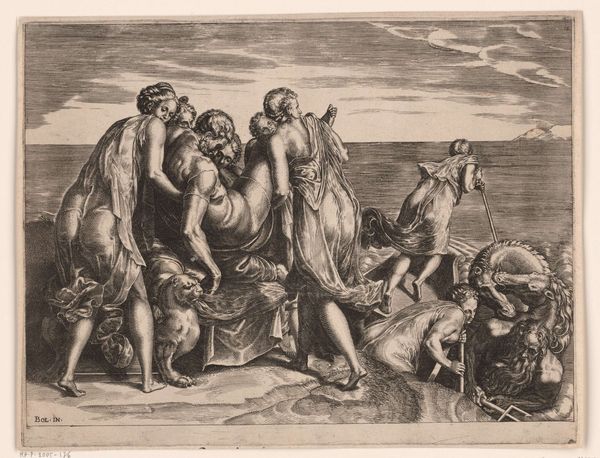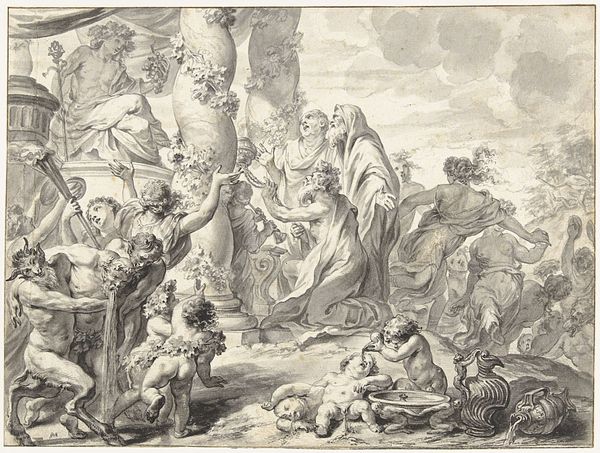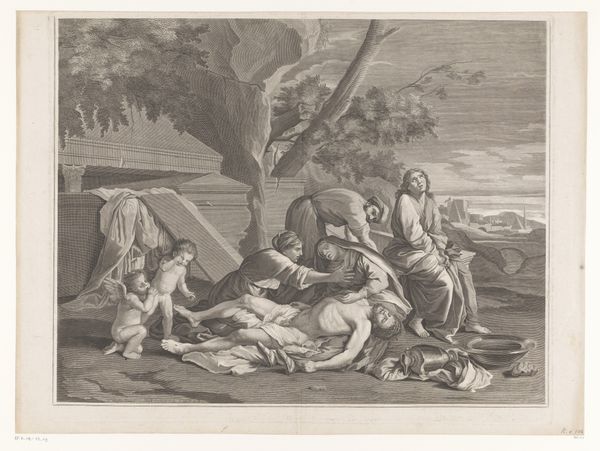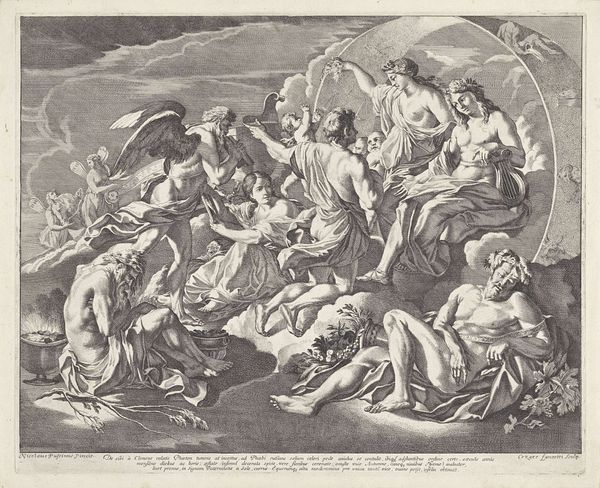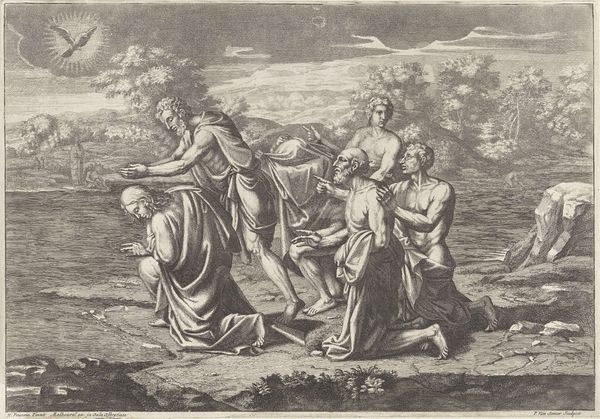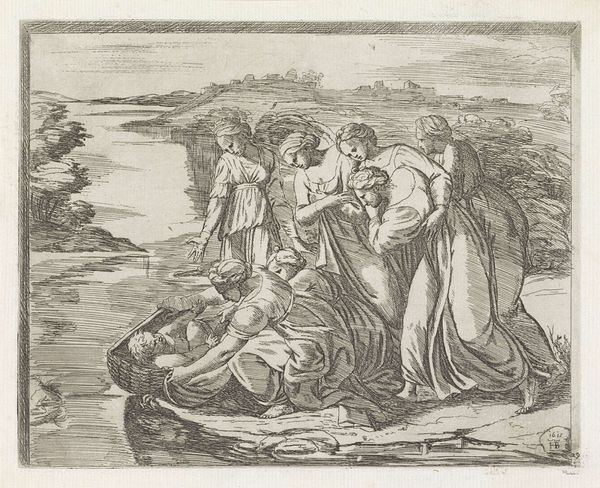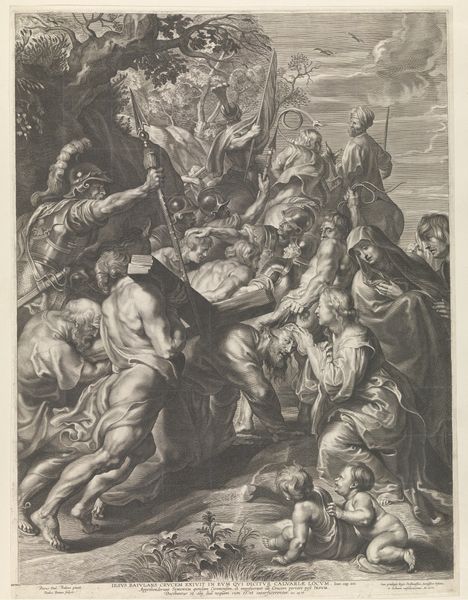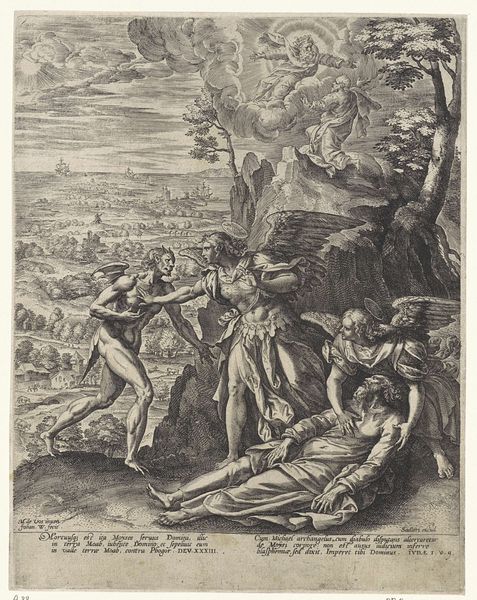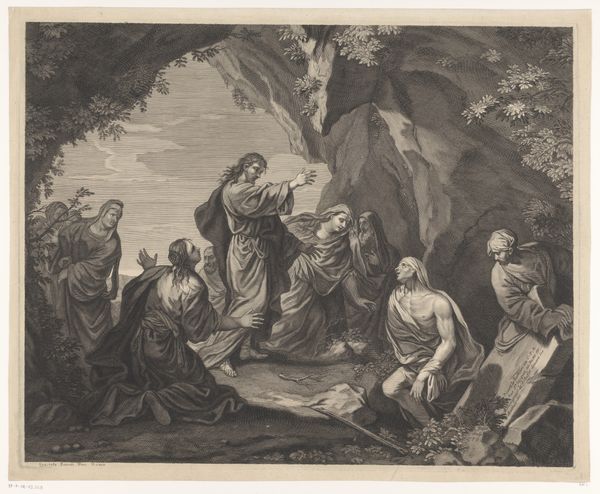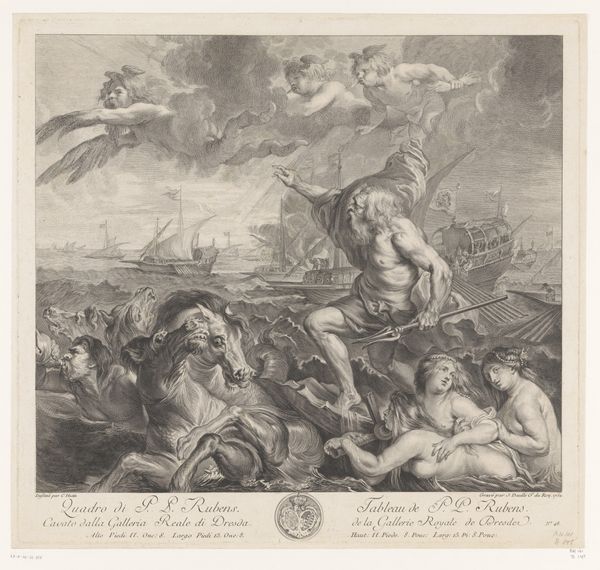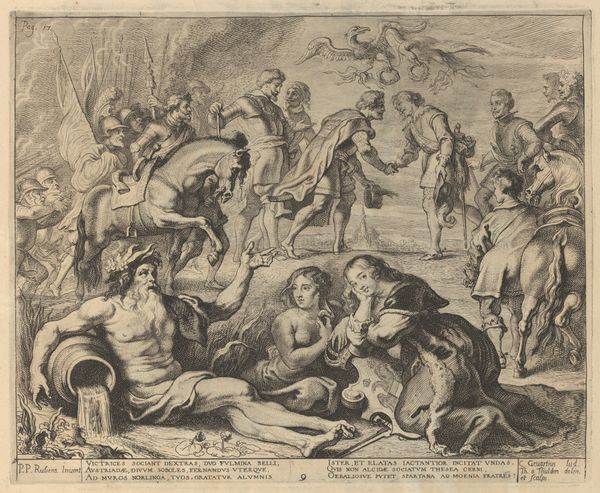
print, engraving
#
narrative-art
#
baroque
# print
#
figuration
#
history-painting
#
engraving
Dimensions: height 335 mm, width 440 mm
Copyright: Rijks Museum: Open Domain
Curator: What strikes me first about this engraving, “Wonderbare visvangst,” attributed to Cornelis Galle I, from around 1670 to 1735, is the sheer abundance of detail. Editor: It does have that high baroque drama to it. Almost dizzying, isn’t it? A chaotic, emotional sort of sublime. Curator: Indeed. It depicts a miraculous catch, with the fishermen hauling in a net overflowing with fish. Look at the intense expressions. Editor: And Jesus, stepping calmly onto the boat! The halo feels so bright amidst all this frenzy, like a beacon of clarity. It’s interesting how halos always cut through darkness, physically and symbolically. That’s intentional, I imagine, to communicate this moment of salvation and grace amid a working day gone incredibly right. Curator: Precisely. This is a visualization of faith intersecting with daily life. See the subtle contrast between the naturalistic portrayal of the fishermen and the almost ethereal representation of Christ? The artist renders everyone here realistically, the lines on the fishermen’s faces reflecting their humanity, and their toiling to haul this miraculous net. Editor: Absolutely. There is a psychological tension, a physical one, that draws you right into the print's narrative. But where is the symbolism that guides you in this case? Is the teeming catch purely representative of spiritual abundance? Curator: I'd argue so, yes. It's not only the physical act of hauling in the fish but also Christ’s pronouncement to them "from now on you will be catching men" taken from Luke. A double catch. It’s baroque metaphor at its best: layers upon layers. The print as an illustration also captures, even makes an appeal, to spiritual conviction. Editor: I appreciate that, because the composition is incredibly crowded. I wonder about the original audience. These figures must have had particular meanings to the folks for whom Galle was working for back then? Curator: I think so. Prints like this were likely popular devotional images, reminding viewers of faith's potential to transform ordinary experiences. What really holds my eye, thinking about the role these might have played in domestic spaces or small chapels is the almost photograph quality in its exactitude, and then there’s this impossible scenario taking place, side-by-side in a way we aren’t used to. Editor: Right. I find myself wondering about this print’s place within the continuum of similar images. It speaks to the long, unwavering need humans have had to visualize, to almost materialize, the divine and its promise. Curator: And how effectively the visual metaphor worked at its time, too.
Comments
No comments
Be the first to comment and join the conversation on the ultimate creative platform.
